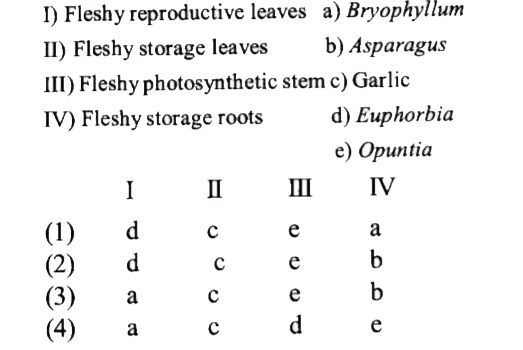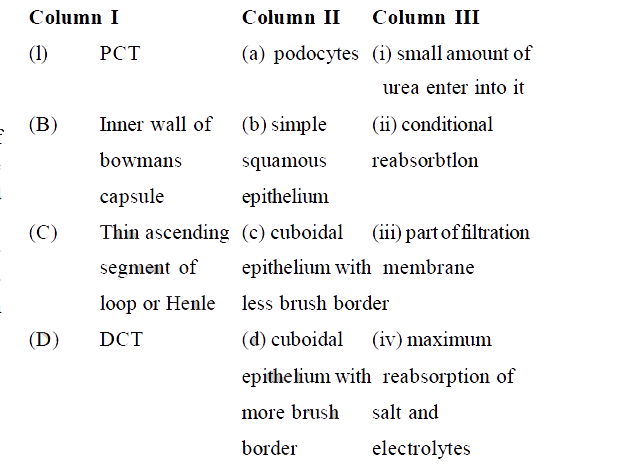Match the following and identify the correct match.
a-ii, b -i c-iii
a-iii, b -i c-ii
a-i, b -ii, c-iii
a-ii, b - iii, c-i
The correct Answer is:A
To solve the question of matching the dinosaur eras with their corresponding millions of years before present, we will follow these steps:
Step 1: Understand the Time Periods
We need to identify the time spans for each of the three periods: Triassic, Jurassic, and Cretaceous.
- Triassic Period: This period lasted from approximately 252 million years ago to 201 million years ago.
- Jurassic Period: This period lasted from approximately 199 million years ago to 145 million years ago.
- Cretaceous Period: This period lasted from approximately 145 million years ago to 66 million years ago.
Step 2: Determine the Correct Matches
Now, we will match each period with the correct millions of years before present:
- Triassic (A): The end of the Triassic period is around 201 million years ago. So, it corresponds to ii 225 million years ago (since 225 million years ago is before 201 million years ago).
- Jurassic (B): The end of the Jurassic period is around 145 million years ago. Therefore, it corresponds to i 175 million years ago (since 175 million years ago is before 145 million years ago).
- Cretaceous (C): The end of the Cretaceous period is around 66 million years ago. Thus, it corresponds to iii 125 million years ago (since 125 million years ago is before 66 million years ago).
Step 3: Write Down the Matches
Based on the above analysis, we can summarize the matches as follows:
- A (Triassic) → ii (225 million years ago)
- B (Jurassic) → i (175 million years ago)
- C (Cretaceous) → iii (125 million years ago)
Step 4: Identify the Correct Match
The correct matches are:
- A → ii
- B → i
- C → iii
Final Answer
The correct match is:
- A (Triassic) → ii (225 million years ago)
- B (Jurassic) → i (175 million years ago)
- C (Cretaceous) → iii (125 million years ago)
We need to identify the time spans for each of the three periods: Triassic, Jurassic, and Cretaceous.
- Jurassic Period: This period lasted from approximately 199 million years ago to 145 million years ago.
- Cretaceous Period: This period lasted from approximately 145 million years ago to 66 million years ago.
Now, we will match each period with the correct millions of years before present:
- Jurassic (B): The end of the Jurassic period is around 145 million years ago. Therefore, it corresponds to i 175 million years ago (since 175 million years ago is before 145 million years ago).
- Cretaceous (C): The end of the Cretaceous period is around 66 million years ago. Thus, it corresponds to iii 125 million years ago (since 125 million years ago is before 66 million years ago).
Based on the above analysis, we can summarize the matches as follows:
- B (Jurassic) → i (175 million years ago)
- C (Cretaceous) → iii (125 million years ago)
The correct matches are:
- A → ii
- B → i
- C → iii
The correct match is:
- A (Triassic) → ii (225 million years ago)
- B (Jurassic) → i (175 million years ago)
- C (Cretaceous) → iii (125 million years ago)
Topper's Solved these Questions
Similar Questions
Knowledge Check
Match the column I and II identify the correct option.
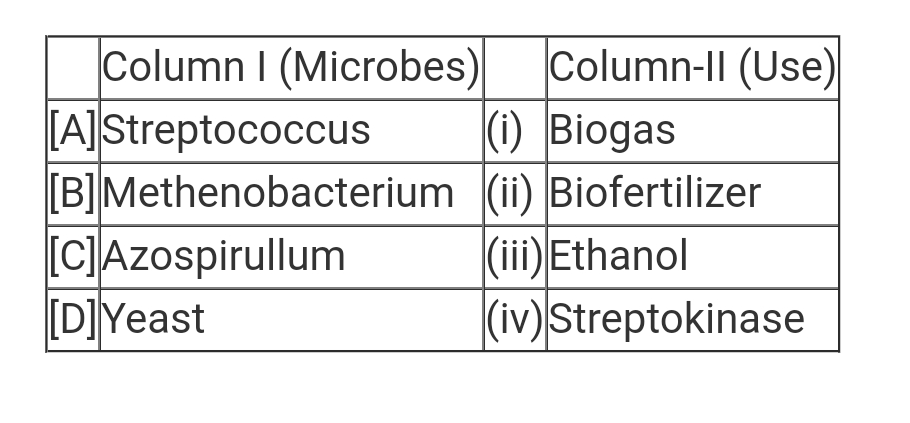 A[A] - (i) , [B] - (ii) , [C] - (iii) , [D] - (iv)B[A] - (iv) , [B] - (i) , [C] - (ii) , [D] - (iii)C[A] - (iv) , [B] - (i) , [C] - (iii) , [D] - (ii)D[A] - (i) , [B] - (iv) , [C] - (ii) , [D] - (iii)
A[A] - (i) , [B] - (ii) , [C] - (iii) , [D] - (iv)B[A] - (iv) , [B] - (i) , [C] - (ii) , [D] - (iii)C[A] - (iv) , [B] - (i) , [C] - (iii) , [D] - (ii)D[A] - (i) , [B] - (iv) , [C] - (ii) , [D] - (iii)Identify the correct match for list I and II
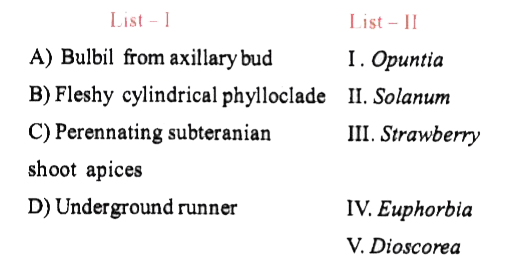 AA-V,B-I,C-11, D-IIIBA-IV,B-I, C-III, D-IICA-IV,B-I, C-III, D-IIDA-II, B-IV,C-III, D-V
AA-V,B-I,C-11, D-IIIBA-IV,B-I, C-III, D-IICA-IV,B-I, C-III, D-IIDA-II, B-IV,C-III, D-VIdentify the correct match from the column I, II and III
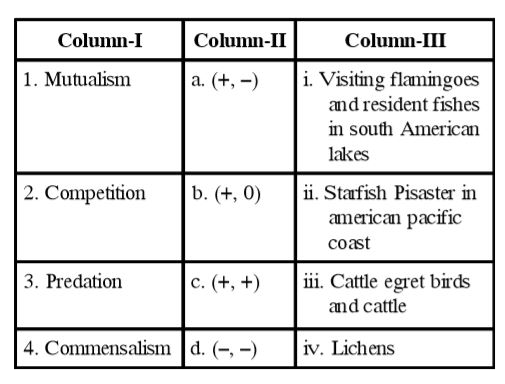 A1 - d - iv, 2 - c - i, 3 - a - ii, 4 - b - iiiB1 - d - iv, 2 - c - i, 3 - a - ii, 4 - b - iiiC1 - c - iv, 2 - d - iii, 3 - a - ii, 4 - b - iD1 - d - iv, 2 - c - i, 3 - b - ii, 4 - a - iii
A1 - d - iv, 2 - c - i, 3 - a - ii, 4 - b - iiiB1 - d - iv, 2 - c - i, 3 - a - ii, 4 - b - iiiC1 - c - iv, 2 - d - iii, 3 - a - ii, 4 - b - iD1 - d - iv, 2 - c - i, 3 - b - ii, 4 - a - iii
Identify the correct match the column I, II and III :-

View SolutionIdentify the correct match from the columns I,II and III.
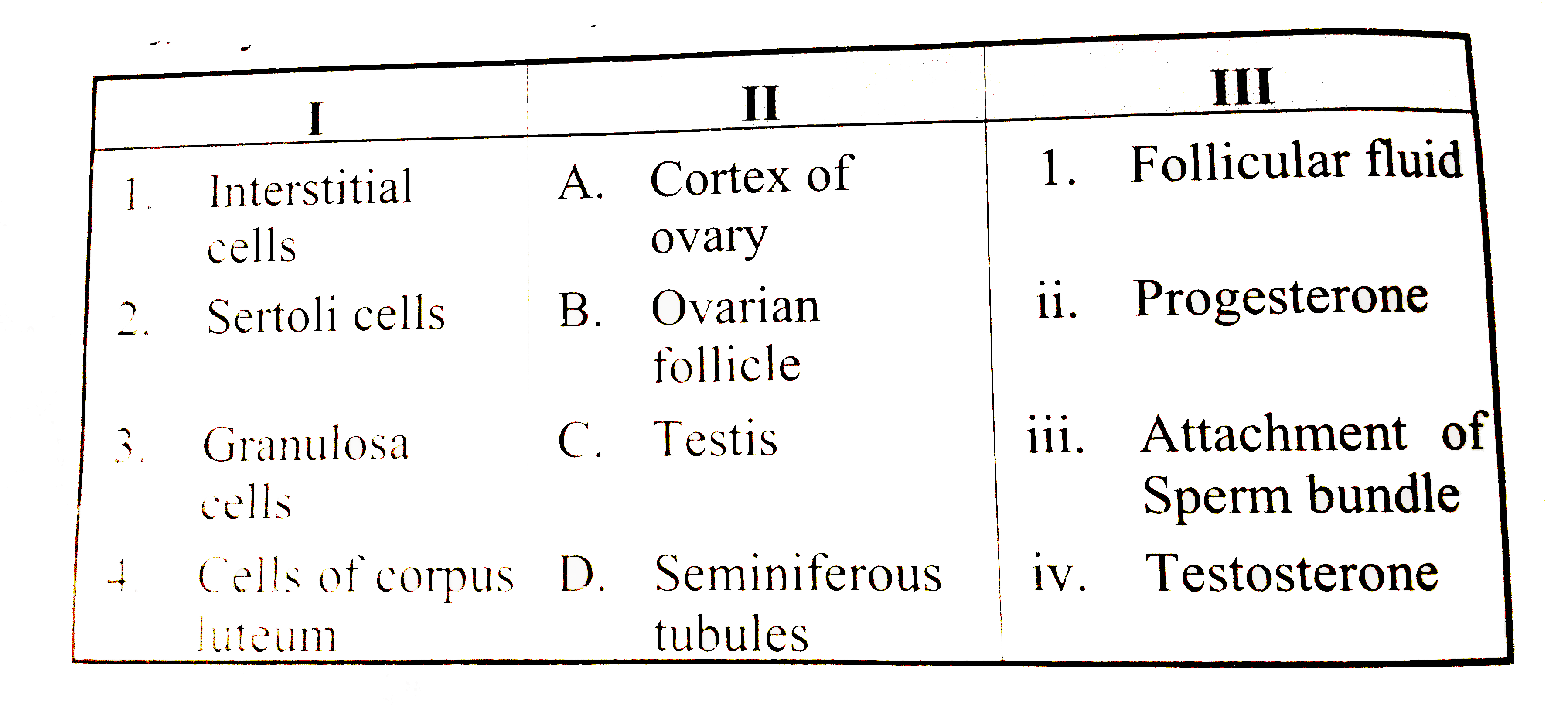
View SolutionIdentify the correct match from the column I,II and III
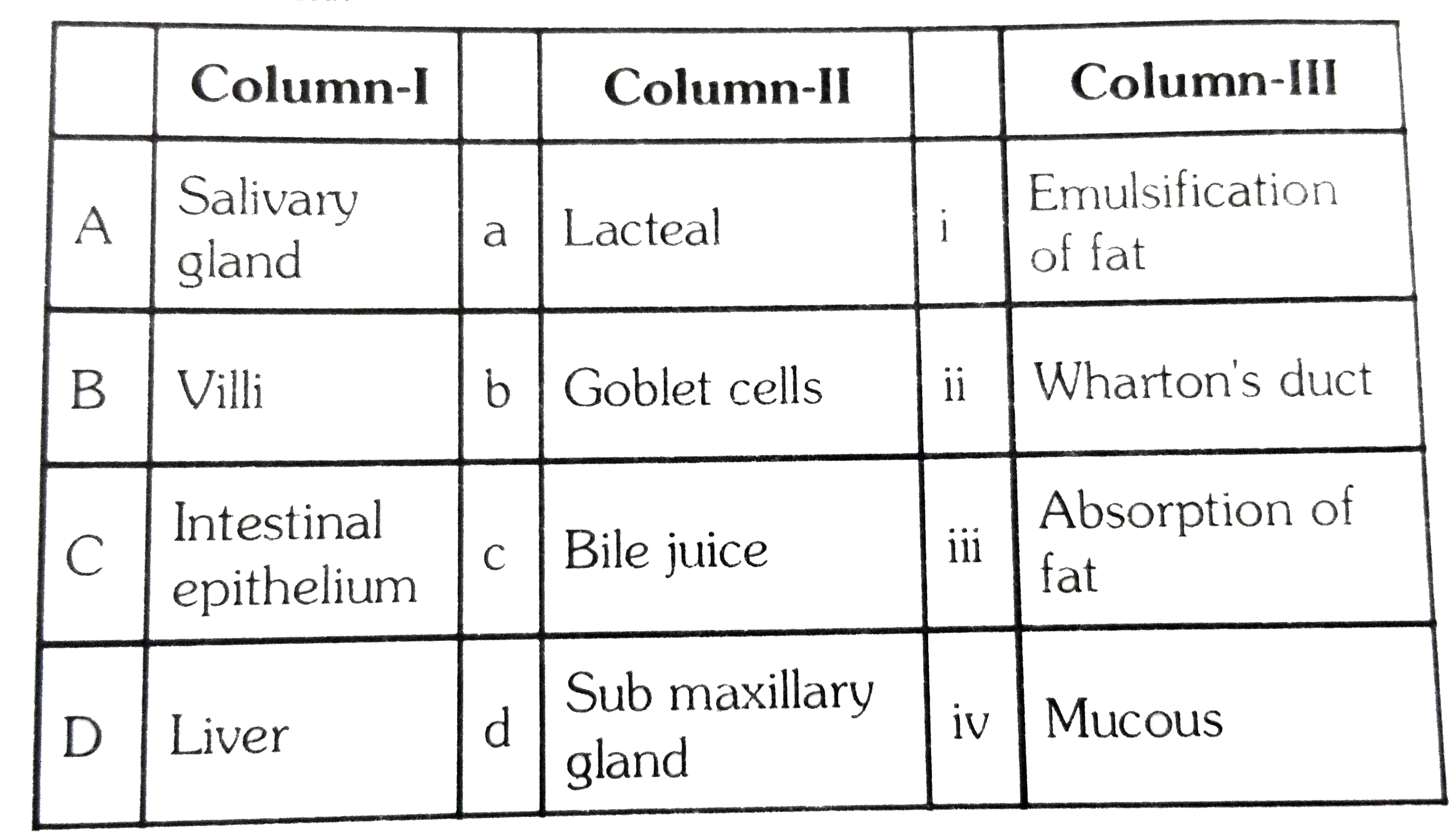
View SolutionIdentify the correct match from the column I,II and III :−
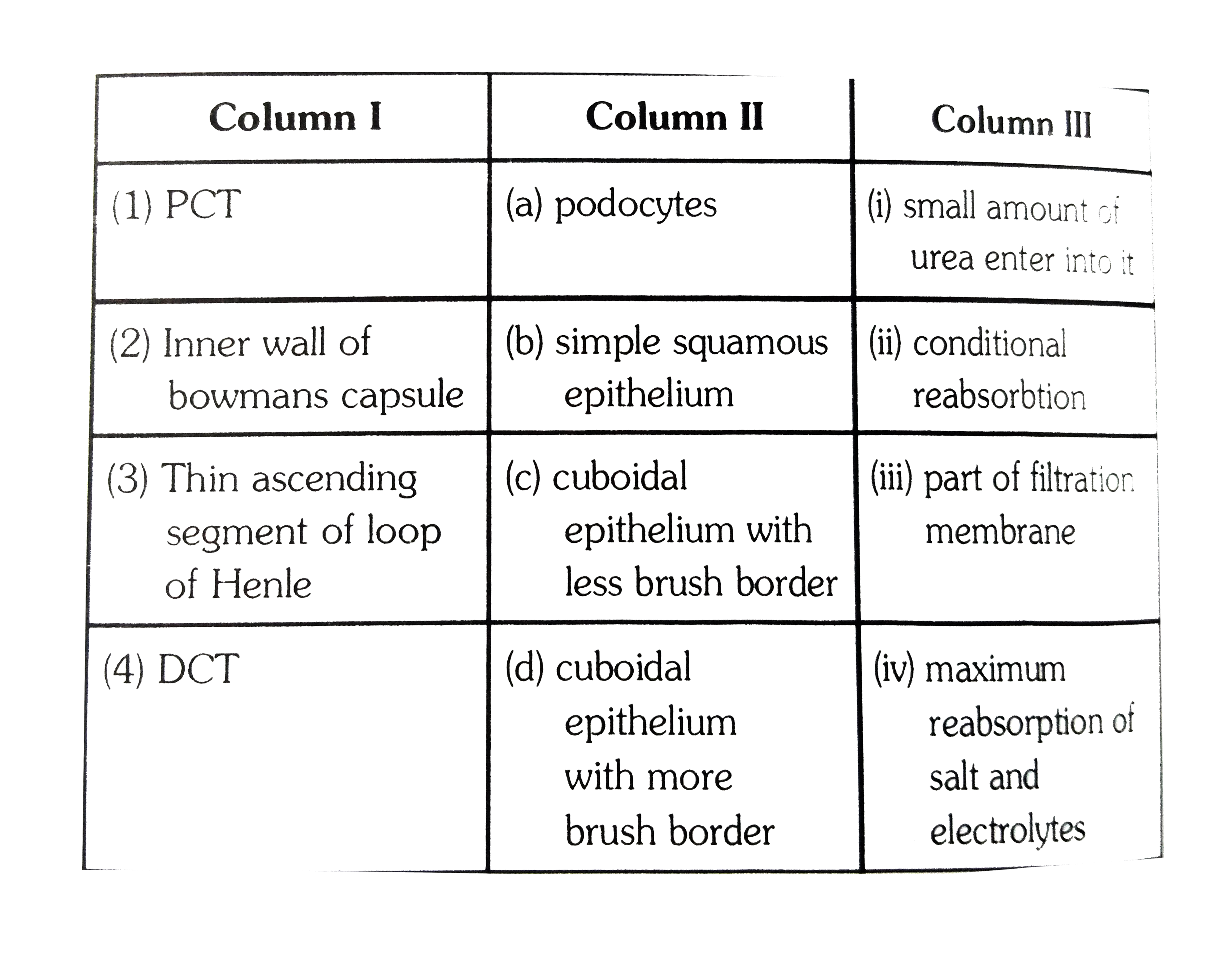
View SolutionIdentify the correct match from the columns I, II and III.
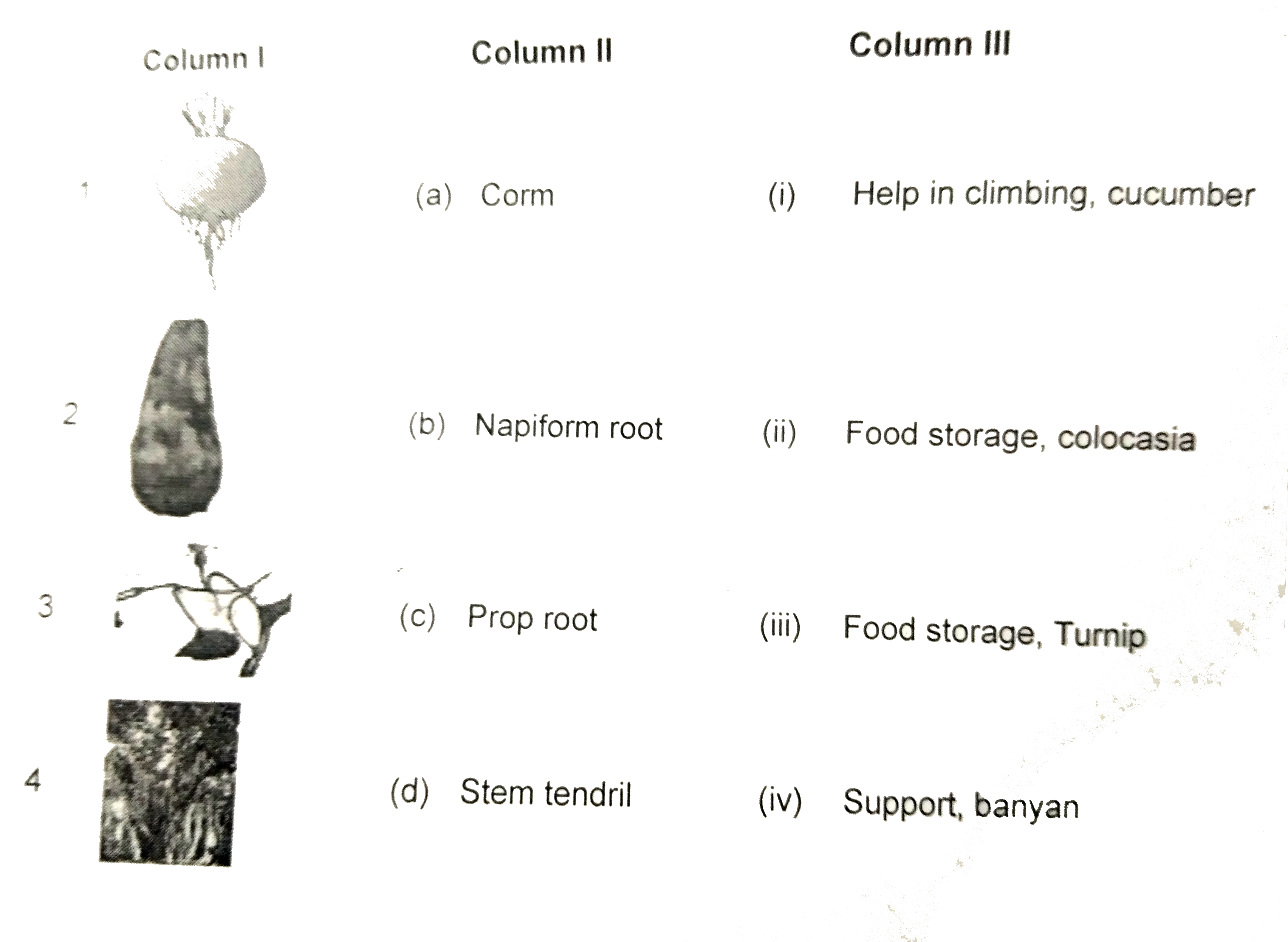
View Solution

